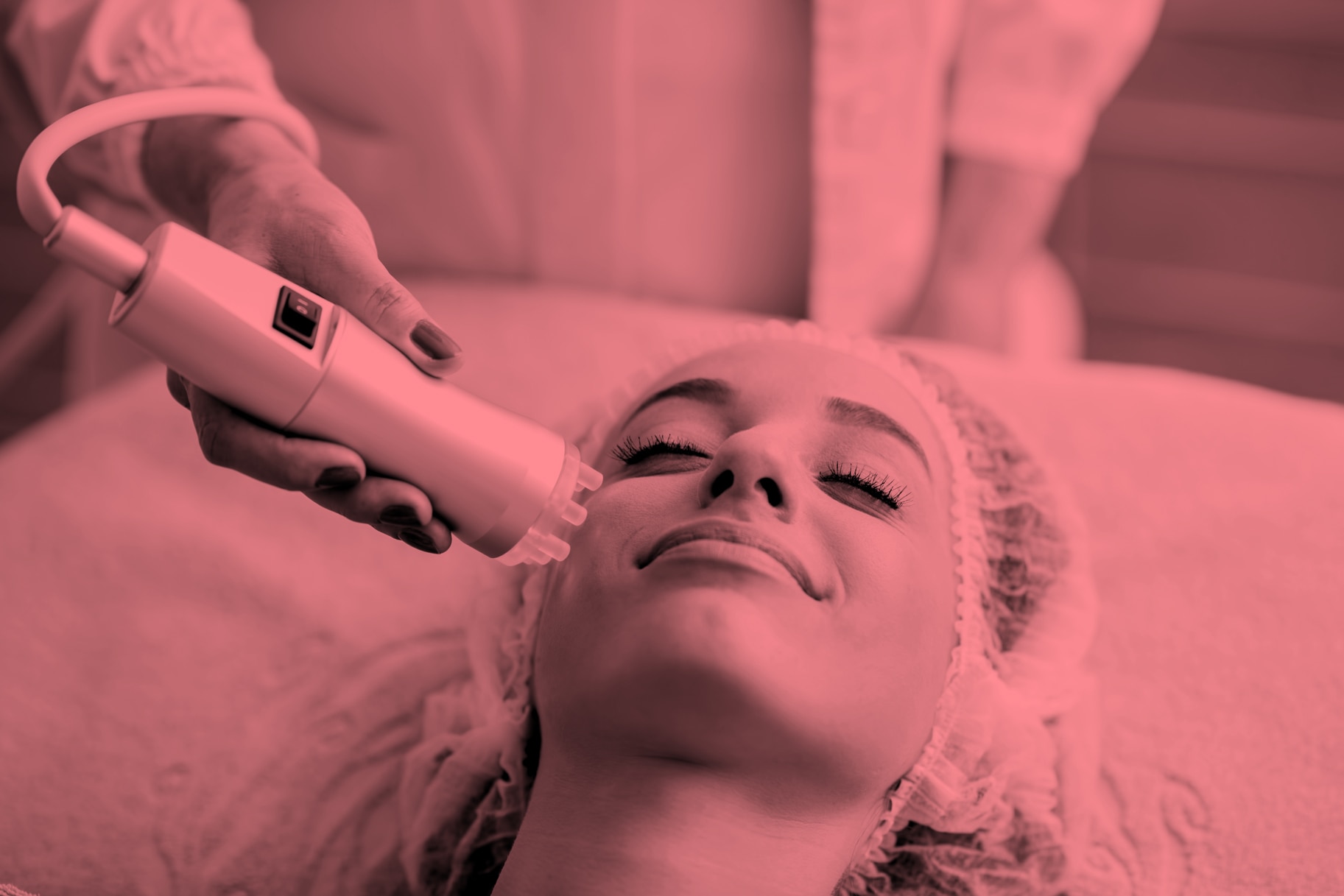Dermatologists Dish on How to Treat and Correct Acne-Related Scarring
Good news: your skin isn't doomed.

However mild or severe, frequent or infrequent, dealing with acne breakouts is a massive frustration in and of itself. It ca upset your dinner date plans and make you want to hide in the back of the group when taking friend-filled snapshots. Acne’s lingering effects — which includes stubborn spots that take months to fade and pitted pock marks — only add salt to the wound.
Sure, you’ve got a little thing called concealer on your side, but truly eradicating old marks is the ultimate goal. It’s not a simple or fast process, but the good news is that you can dramatically reduce acne-related scars and marks with over-the-counter and in-office treatments. We asked three dermatologists to lend their insight and advice to help you do just that.
What causes scarring in the first place?
Before we talk about treatments, let’s briefly explore what causes hyperpigmentation and scarring in the first place.
“Ice-pick scars, also known as pock marks, are depressed scars resulting from the destruction of skin cells caused by inflammation in deeper layers of skin. Pock marks may or may not be associated with hyperpigmentation and are considered permanent scars,” explains Dr. David Lortscher, a board-certified dermatologist, CEO, and founder of Curology. “Hyperpigmentation occurs when there’s an excess of melanin production in the skin. It typically forms when there is injury to the skin from acne, sun damage, or other skin injuries. Hyperpigmentation, happily, will fade with time and so is not considered true scarring.”
Acne-related hyperpigmentation — which usually presents as pink, red, brown, or black spots depending on how fair or dark your skin is — does eventually fade on its own. When left alone, this process can take six to 12 months. Talk about a waiting game… Fortunately, there are products and treatments you can use to expedite this healing process. Because pock mark scars are an actual alteration of your skin’s architecture versus a surface-level “stain,” you’ll need a more aggressive, in-office procedure to minimize their appearance.
Topical and in-office treatments for hyperpigmentation
To treat discoloration, seek products with ingredients that promote skin lightening and cell turnover.
“Lightening or brightening agents can be useful, as can at-home exfoliation with peels or microdermabrasion creams,” notes Dr. Audrey Kunin, a board-certified dermatologist and the founder of DERMADoctor. “The combination of these can help prevent the development of new excessive pigment within the skin while the exfoliates help lift away pigment that’s already present.”
One of the most potent ingredients (which shouldn’t be used while pregnant) is hydroquinone, notes Dr. Lortscher.
“Hydroquinone produces lightening of the skin by interfering with melanin production by melanocytes, which are the pigment-producing cells in the skin,” he says. “It does so by inhibiting tyrosinase, one of the key enzymes necessary for the production of melanin.”
Other recommended ingredients are niacinamide, a form of vitamin B3 that boasts potent antioxidant activity to help reduce inflammation and pigmentation; alpha hydroxy acids (AHA), a family of chemical exfoliants that shed dead cells and promote cell turnover; and azelaic acid, which is a particularly effective treatment for acne, rosacea, melasma, and post-inflammatory hyperpigmentation.
In addition to at-home treatments, you can further expedite the fading process by hitting up your dermatologist for a more intensive treatment.
“Chemical peels and laser treatments are great in-office treatments,” says Dr. Adarsh Vijay Mudgil, medical director of Mudgil Dermatology, PC. “A series four to five peels generally are in the hundreds of dollars range and can be performed weekly, every other week, or monthly depending on the specific type of peel. A series of four to five laser treatments are generally several thousand dollars. Laser treatments are generally spaced four to six weeks apart.”
Note that hyperpigmentation generally fades within a year, so these treatments aren’t necessary for removal. They’re primarily intended for those who want to speed up recovery. The good news is that peel and laser treatments boast other benefits, as well, including overall skin resurfacing, tightening, and the reduction of fine lines.
The best way to treat pock mark scars
As mentioned, pock marks are a different beast compared to hyperpigmentation since it involves a permanent change to your skin’s texture. Some high-potency vitamin C serums might help since they support collagen production, notes Dr. Kunin, but for severe "pits" your time and money is best spent on professional, in-office treatments.
“There are a number of procedures that may be used solely or in combination to help with scarring. Any true ice-pick, or significantly depressed scars, would be considered permanent, and may be improved in the future by some type of scar revision therapy,” says Dr. Lortscher. “Punch excisions and acid treatments — such as subscision and cross-technique with TCA (trichloracetic acid) — help to undo some of the tethering below the skin's surface that contribute to ice-pick scars. Dermabrasion, derma-rolling, and serial fractionated ablative laser may be used for boxcar and rolling scars. Fillers can help to replace volume in rolling-type of scars.”
Whatever treatment option you choose, we highly recommend seeking a cosmetic dermatologist who can a provide a range of customized treatments that suit your specific needs. Also, it’s best to determine what’s causing your acne and get it under control before moving on to corrective treatments.
Final words of wisdom
As a related aside, it’s important to not exacerbate any scarring or hyperpigmentation via picking, squeezing, or popping existing blemishes. Further, practicing good sun protection is key since exposure can aggravate existing hyperpigmentation and even create new spots. Finally, be patient while you pursue treatment; the correction and improvement process can take anywhere from several months to several years. As time passes and extra care is taken, you’ll see improvement in both your skin quality and texture.



